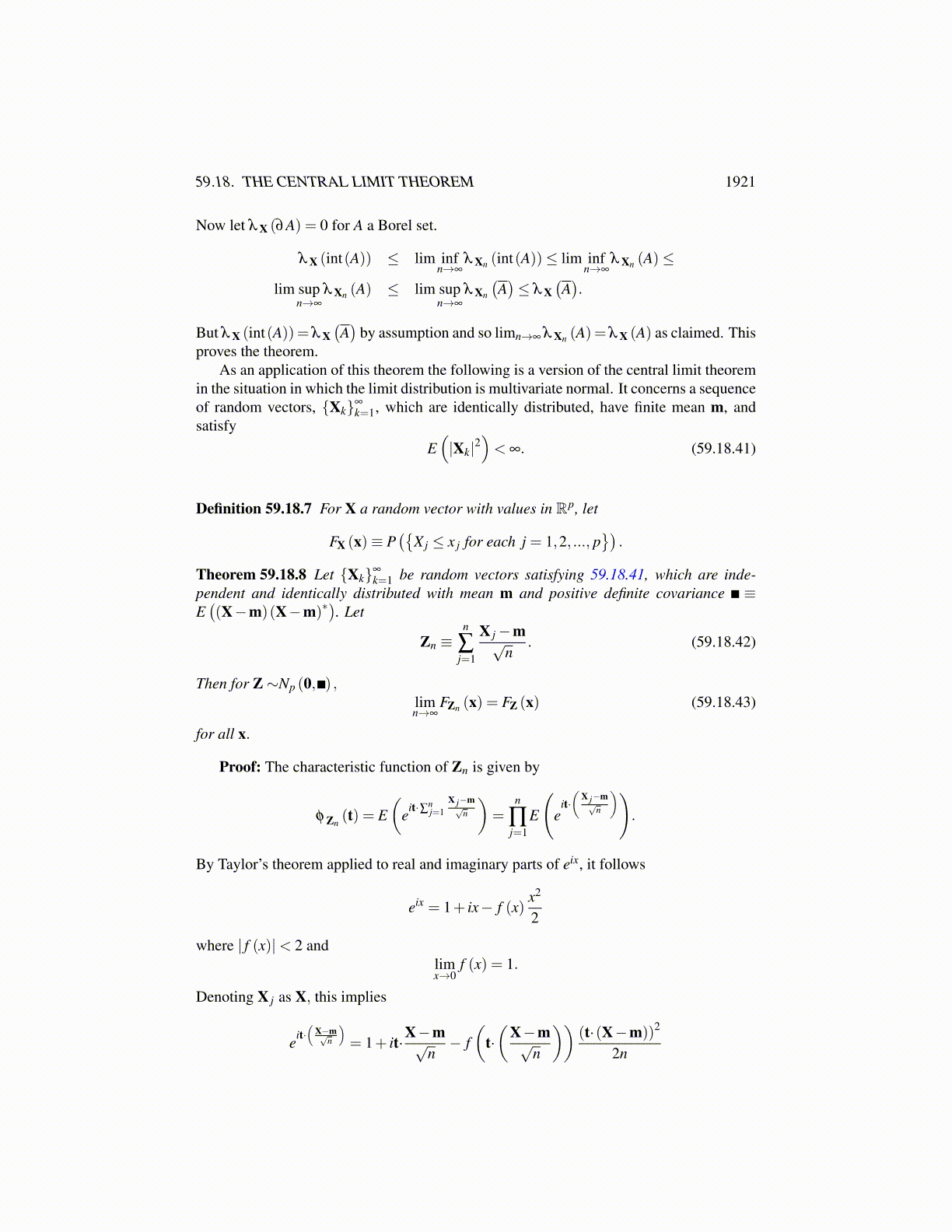
59.18. THE CENTRAL LIMIT THEOREM 1921
and so, considered as elements of S∗,
F−1 (λ X) = φ X (·)(2π)−(p/2) ∈ L∞.
By the dominated convergence theorem
(2π)p/2 F−1 (λ Xn)(ψ) ≡∫Rp
φ Xn(t)ψ (t)dt
→∫Rp
φ X (t)ψ (t)dt
= (2π)p/2 F−1 (λ X)(ψ)
whenever ψ ∈S. Thus
λ Xn (ψ) = FF−1λ Xn (ψ)≡ F−1
λ Xn (Fψ)→ F−1λ X (Fψ)
≡ F−1Fλ X (ψ) = λ X (ψ).
This proves the lemma.
Lemma 59.18.4 If φ Xn(t)→ φ X (t) , then if ψ is any bounded uniformly continuous func-
tion,limn→∞
∫Rp
ψdλ Xn =∫Rp
ψdλ X.
Proof: Let ε > 0 be given, let ψ be a bounded function in C∞ (Rp). Now let η ∈C∞c (Qr)
where Qr ≡ [−r,r]p satisfy the additional requirement that η = 1 on Qr/2 and η (x) ∈ [0,1]for all x. By Lemma 59.18.2 the set, {λ Xn}
∞
n=1 , is tight and so if ε > 0 is given, there existsr sufficiently large such that for all n,∫
[x/∈Qr/2]|1−η | |ψ|dλ Xn <
ε
3,
and ∫[x/∈Qr/2]
|1−η | |ψ|dλ X <ε
3.
Thus, ∣∣∣∣∫Rpψdλ Xn −
∫Rp
ψdλ X
∣∣∣∣≤ ∣∣∣∣∫Rpψdλ Xn −
∫Rp
ψηdλ Xn
∣∣∣∣+∣∣∣∣∫Rpψηdλ Xn −
∫Rp
ψηdλ X
∣∣∣∣+ ∣∣∣∣∫Rpψηdλ X−
∫Rp
ψdλ X
∣∣∣∣≤ 2ε
3+
∣∣∣∣∫Rpψηdλ Xn −
∫Rp
ψηdλ X
∣∣∣∣< ε
whenever n is large enough by Lemma 59.18.3 because ψη ∈ S. This establishes theconclusion of the lemma in the case where ψ is also infinitely differentiable. To considerthe general case, let ψ only be uniformly continuous and let ψk = ψ ∗ φ k where φ k is amollifier whose support is in (−(1/k) ,(1/k))p. Then ψk converges uniformly to ψ and sothe desired conclusion follows for ψ after a routine estimate. This proves the lemma.